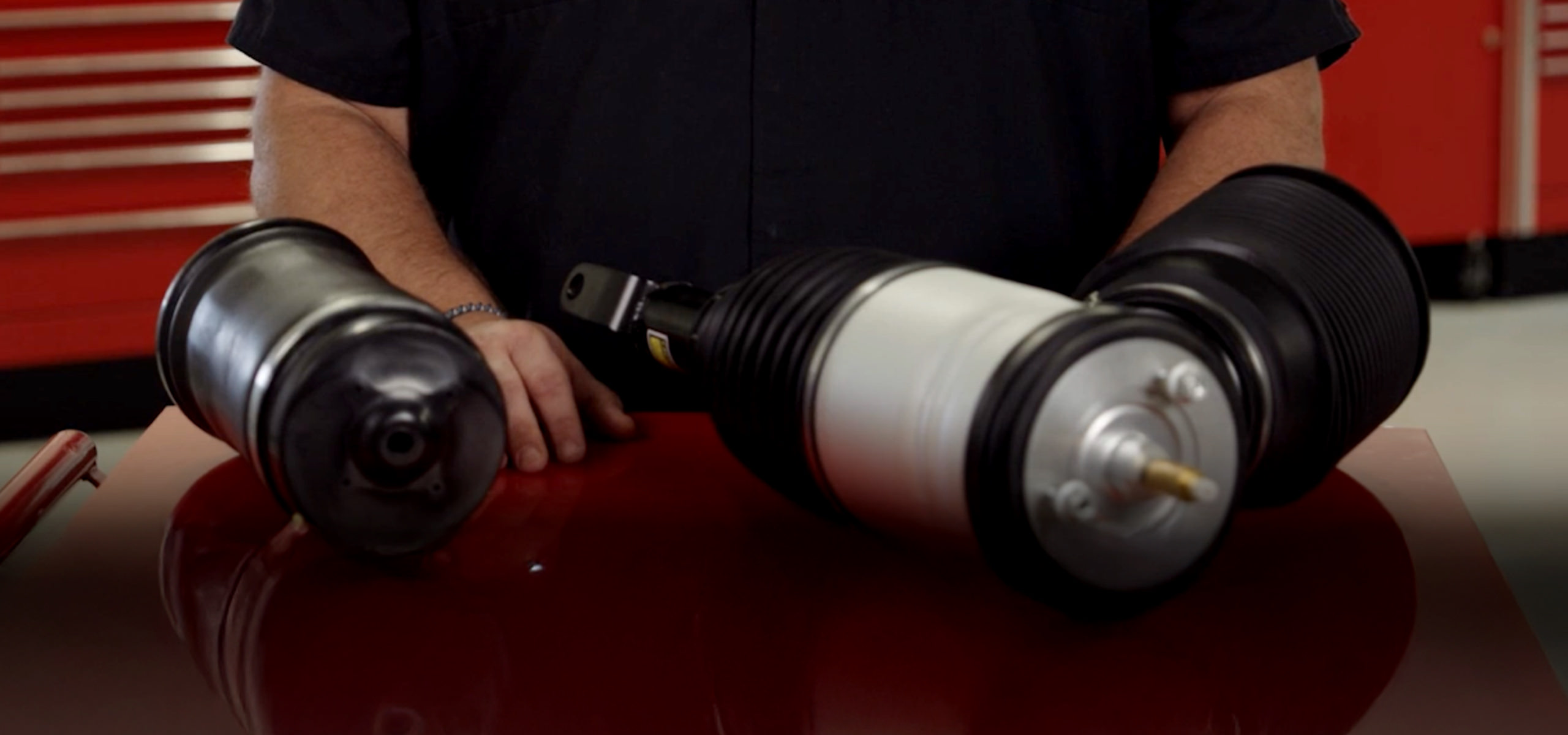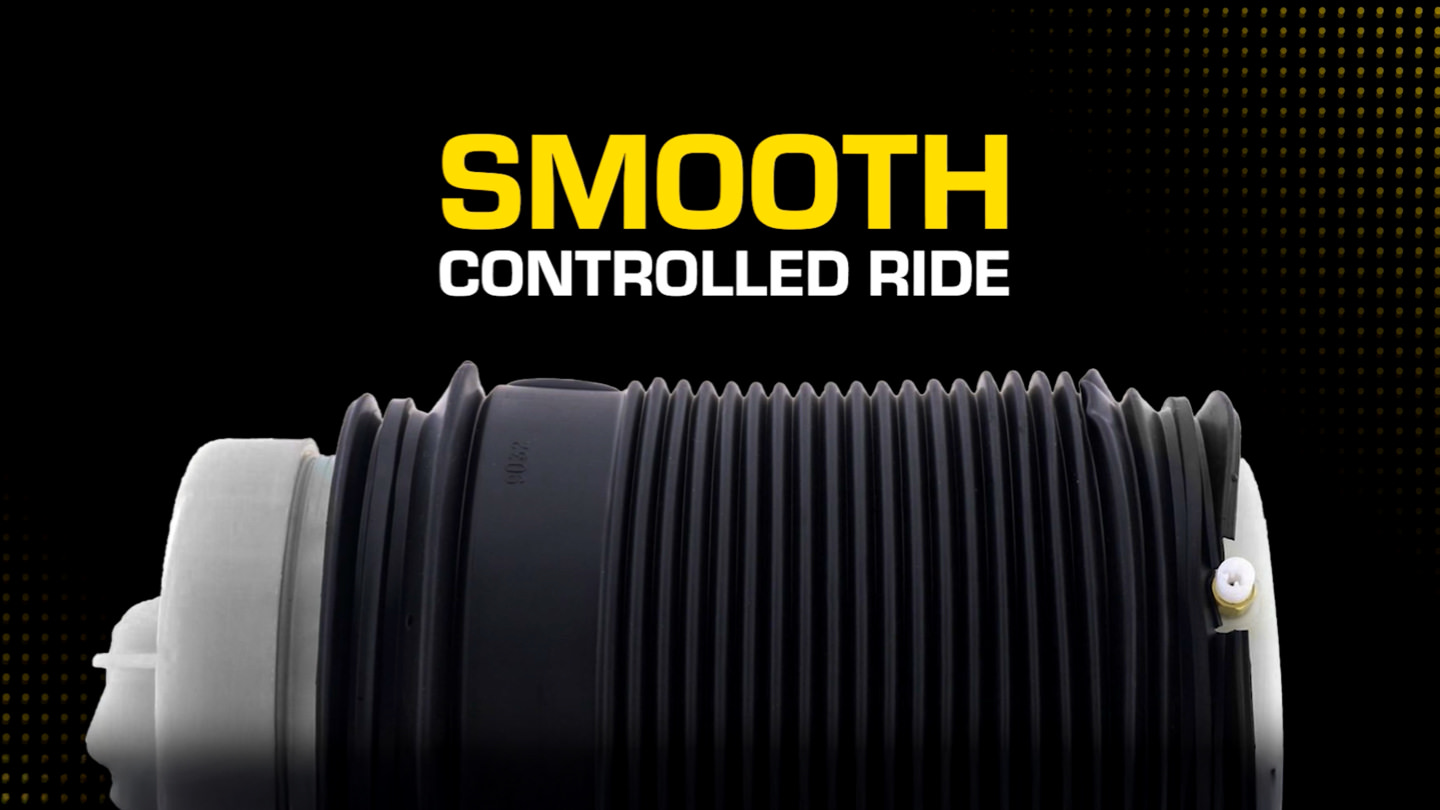
Diagnosing Common Air Suspension Problems
Diagnosing Common Air Suspension Problems
Comfortable Ride
Known for delivering a smooth ride, air suspension systems can be found on luxury cars and vehicles that tow and haul. Featuring pneumatic springs instead of steel coil springs that a conventional suspension system uses, an air suspension lets drivers adjust the stiffness and vehicle height. This adjustability accommodates different loads and gives the ability to optimize ground clearance. As with any system on a vehicle, the air suspension can have problems that need to be addressed.

Air Suspension Parts Subject to Failure

If you suspect there is an issue with the air suspension system, there are several parts that could be the source of the problem. When diagnosing air suspension problems, there are some common areas to investigate.
Air Springs & Lines
One of the most common issues with air suspension systems are air leaks from damaged air springs and air lines. A hissing noise, decrease in ride height and bubbles in the air lines are all signs of an air leak. Air leaks accelerate wear on the compressor by requiring it to work harder to maintain pressure.
Compressor
A failing compressor can result in decreased ride quality, problems adjusting the ride height and strange noises coming from the compressor. A faulty compressor needs to be replaced to ensure the air bags and the air suspension system continues to work efficiently.
Air Springs
Worn air springs can result in a decrease in ride quality and change in ride height. Weathering and repeated compression/decompression cycles cause cracks in the bellows. If air springs are damaged, they need to be replaced.
Ride Height Sensors
An air suspension system relies upon a ride height sensor to ensure the vehicle remains level and delivers a smooth ride. If the ride height sensors fail, you may notice a change in ride height, error codes related to the ride height sensors and reduced ability to adjust the ride height.
Solenoid Valves
Designed to control the flow of air in the air suspension system, properly functioning solenoid valves are crucial. Decreased ride quality, noises coming from the valves or inability to adjust the ride height can signal an issue with the air suspension system.
Air Dryer
Air suspension systems include dryers to keep corrosion-causing moisture out. If a dryer fails, it can allow water to get on metal parts which can rust resulting in a short in an electrical component or an air leak.
Electronic Control Unit
If there is an issue with the Electronic Control Unit (ECU), it can cause the air suspension system to operate inconsistently. You may experience trouble adjusting the ride height, a decrease in ride quality or error codes.
Diagnosing Air Suspension Problems

To determine the source of the vehicle’s air suspension issues there are several steps that you can take. Running through these steps can help you zero in on the root cause.
Physical Inspection - Perform a visual examination looking for:
- Visible leaks involving the air lines, connections and struts/shocks.
- Damage to air suspension components.
- Lower ride height causing the vehicle to sag at any of the corners or on one side.
Test Ride – Take the vehicle for a drive to assess the ride quality looking for rough, unstable or bouncy symptoms.
Checking for Air Leaks – Air leaks can be an issue in the lines, valves and air bags. Spray soapy water on these components and look for escaping bubbles. Also listen for hissing sounds that can indicate an air leak.
Abnormal Sounds – When adjusting the ride height, listen for unusual sounds coming from the suspension like clicking, hissing or grinding. Abnormal sounds can point to problems with the air suspension.
Scan Vehicle – Scan the vehicle for any diagnostic trouble codes related to the air suspension. Common codes:
- C1562 – Ride height air pump control malfunction
- C1200 – Air suspension pressure sensor malfunction
- C1201 – air suspension height sensor malfunction
Warning Lights – Check for any dashboard warning lights that may help you zero in on the problem.
Check Air Pressure – Use a pressure gauge to measure air pressure in the system and identify leaks.
Examine Compressor Unit – Look at the connections on the compressor unit, check for melting or corrosion that can result in electrical problems. Listen to make sure the compressor is engaging. In addition, a leak in the system can make the compressor overwork leading to failure.
Learn more about QUALITY SHOCKS, STRUTS & STRUT ASSEMBLIES, FIND THE RIGHT CAR PART, or FIND A LOCAL REPAIR SHOP today.
The content in this article is for informational purposes only. You should consult with a certified technician or mechanic if you have questions relating to any of the topics covered herein. Tenneco will not be liable for any loss or damage caused by your reliance on any content.